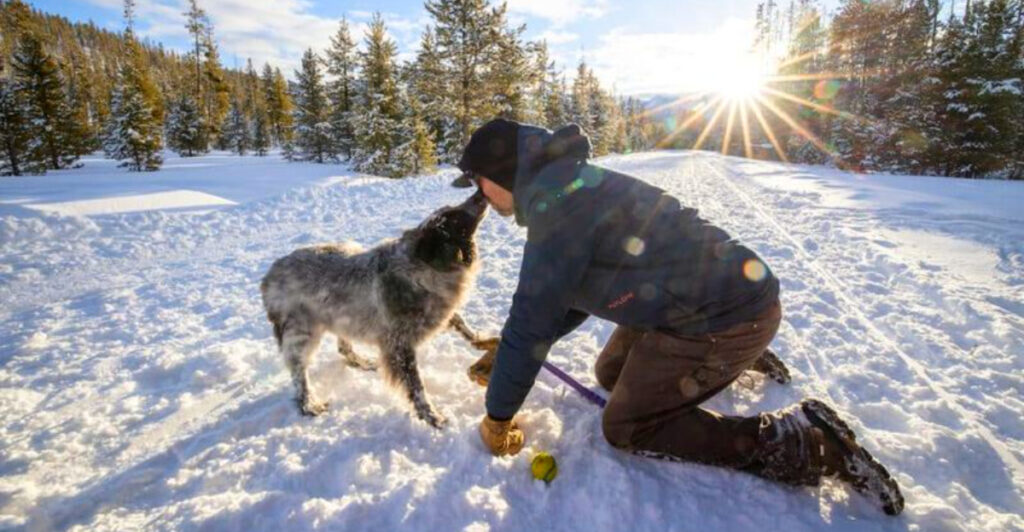Winter hiking with your furry friend opens up a magical world of snow-covered trails and peaceful landscapes. Cold weather brings unique challenges that require special preparation to keep your dog safe and comfortable. Smart planning and the right gear make all the difference between a memorable adventure and a dangerous situation.
1. Check Your Dog’s Health Before You Go

A pre-winter vet visit can save your hiking season from disaster. Your veterinarian will assess whether your dog’s heart, joints, and overall fitness can handle cold-weather exercise.
Older dogs and puppies face higher risks in freezing temperatures. Breeds with breathing issues or joint problems need extra careful evaluation before tackling snowy trails.
Getting medical clearance gives you confidence to explore winter wonderlands safely together.
2. Know Your Breed’s Cold Tolerance
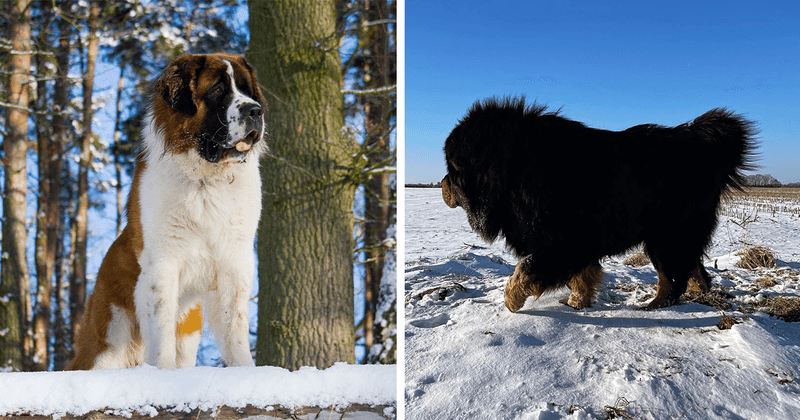
Huskies practically dance in blizzards while Chihuahuas shiver at the first snowflake. Understanding your dog’s natural cold resistance helps you plan appropriate adventures.
Double-coated breeds like Golden Retrievers handle moderate cold well. Single-coated dogs and small breeds need shorter trips with more gear.
Body size matters too – larger dogs retain heat better than tiny companions who lose warmth quickly.
3. Use a Proper Winter Coat or Sweater
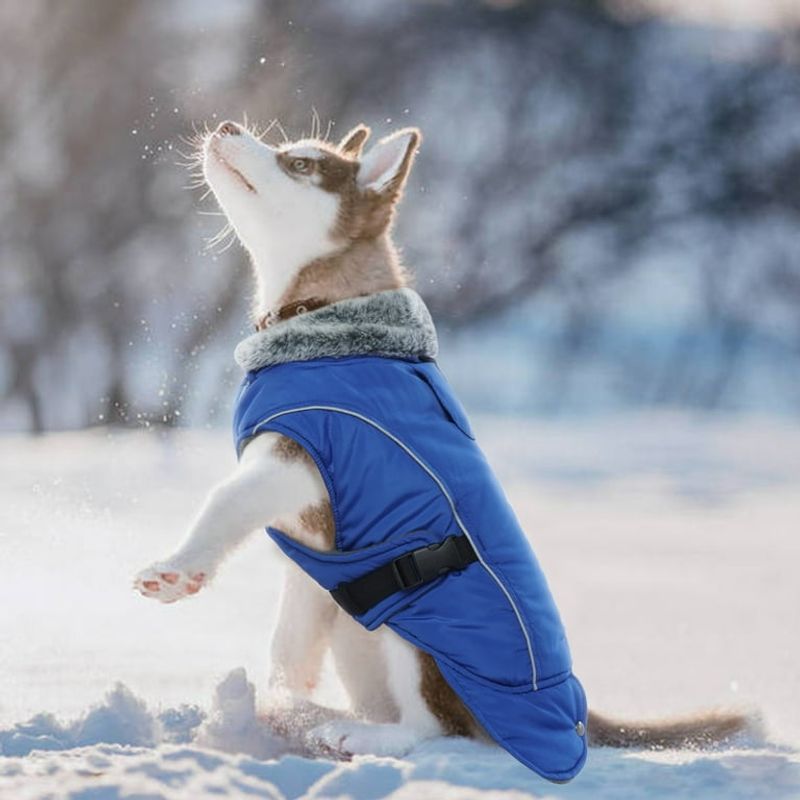
Waterproof insulation transforms a miserable dog into an eager trail companion. Look for jackets with reflective strips that help you spot your pet in dim winter light.
The coat should cover your dog’s chest and belly without restricting movement. Avoid anything with dangling parts that catch on branches or tempt chewing.
A well-fitted jacket keeps core body temperature stable during long outdoor adventures.
4. Protect the Paws
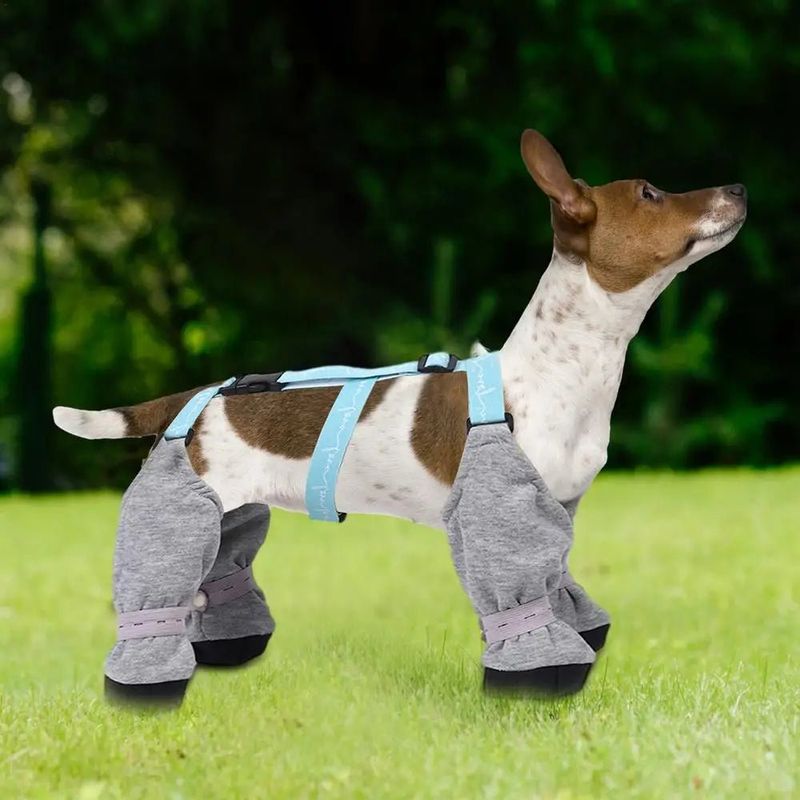
Paw pads weren’t designed for ice crystals and road salt. Booties provide the ultimate protection but require patience to get your dog accustomed to wearing them.
Paw balm creates a protective barrier against harsh elements. Apply it before heading out and again after returning home.
Check between toes regularly for ice balls that form and cause painful limping on the trail.
5. Keep Them Hydrated
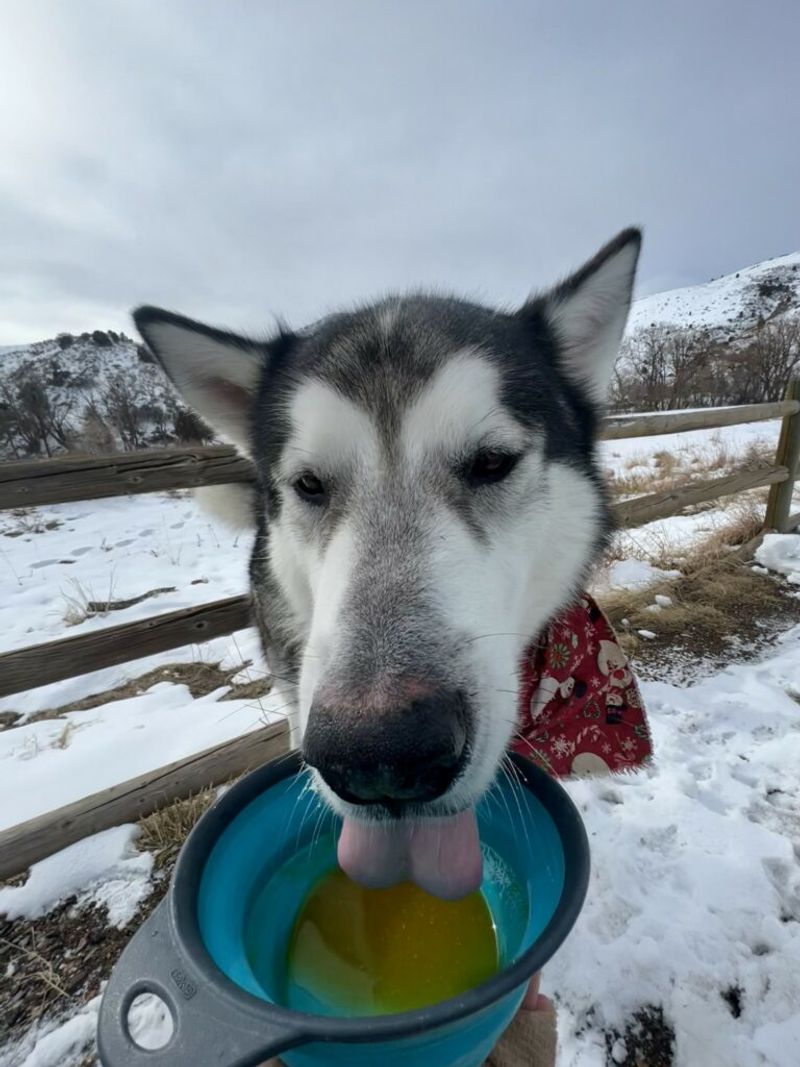
Cold air tricks you into thinking your dog needs less water, but winter dehydration happens faster than you’d expect. Dry winter air pulls moisture from their body constantly.
Pack extra water in an insulated container to prevent freezing. Offer frequent drink breaks even when your dog isn’t panting heavily.
Snow eating looks refreshing but actually lowers body temperature while providing minimal hydration benefits.
6. Watch for Signs of Hypothermia and Frostbite
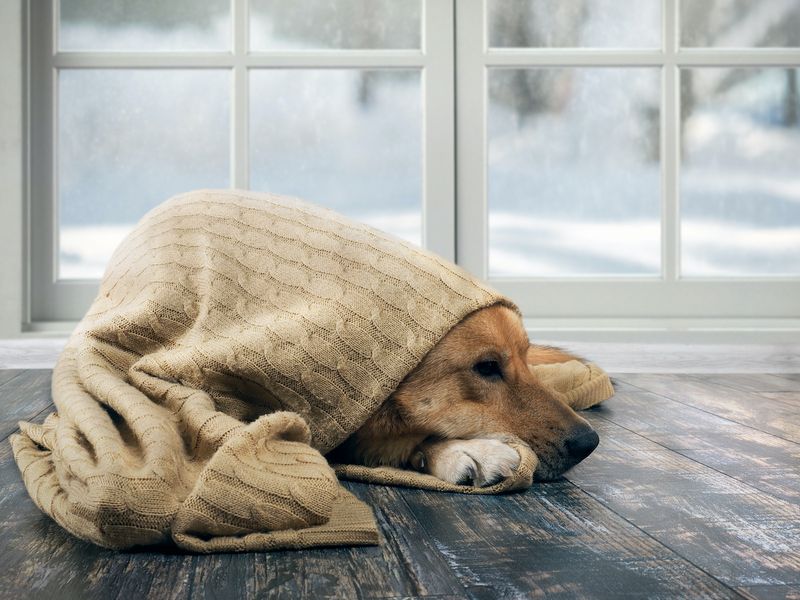
Shivering marks the beginning of your dog’s body losing its battle against cold. Lethargy, pale gums, and stiff movements signal serious trouble ahead.
Frostbite targets ear tips, tail ends, and paw pads first. These areas may appear red, then pale, then potentially black.
When warning signs appear, wrap your dog warmly and head for shelter immediately – don’t wait to see if things improve.
7. Use a Sturdy Leash and Harness

Snow masks familiar scents that normally guide your dog’s navigation instincts. Even well-trained dogs can become disoriented in white-covered landscapes.
A harness distributes pressure better than collars when you need to steady your dog on icy patches. Bright colors help both of you stay visible.
Retractable leashes become brittle in freezing temperatures – stick with standard six-foot leads for reliable control and safety.
8. Plan Shorter, Safer Routes
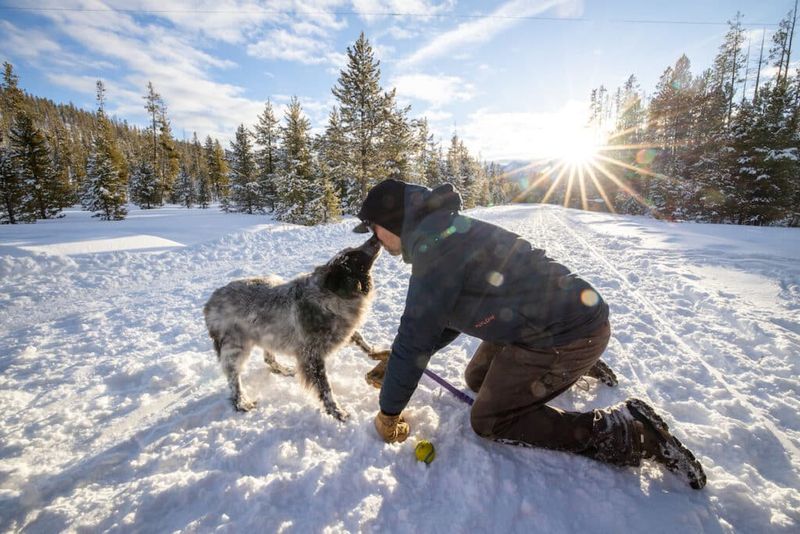
Winter conditions drain energy reserves much faster than summer hikes. Your usual five-mile adventure might become too challenging when snow depth doubles the effort required.
Stick to well-marked trails where rescue teams can find you if needed. Share your planned route and return time with someone reliable.
Start with shorter distances to gauge your dog’s winter stamina before attempting longer wilderness adventures together.
9. Pack Extra Towels and Blankets

Wet fur against car seats creates a chilly ride home that can undo all your warming efforts. Towels help remove snow and moisture before it soaks deeper.
Focus drying efforts on your dog’s belly, legs, and paws where snow clings most stubbornly. A warm blanket in the car provides immediate comfort.
This simple preparation prevents post-hike chills and keeps your adventure ending on a positive, cozy note.

